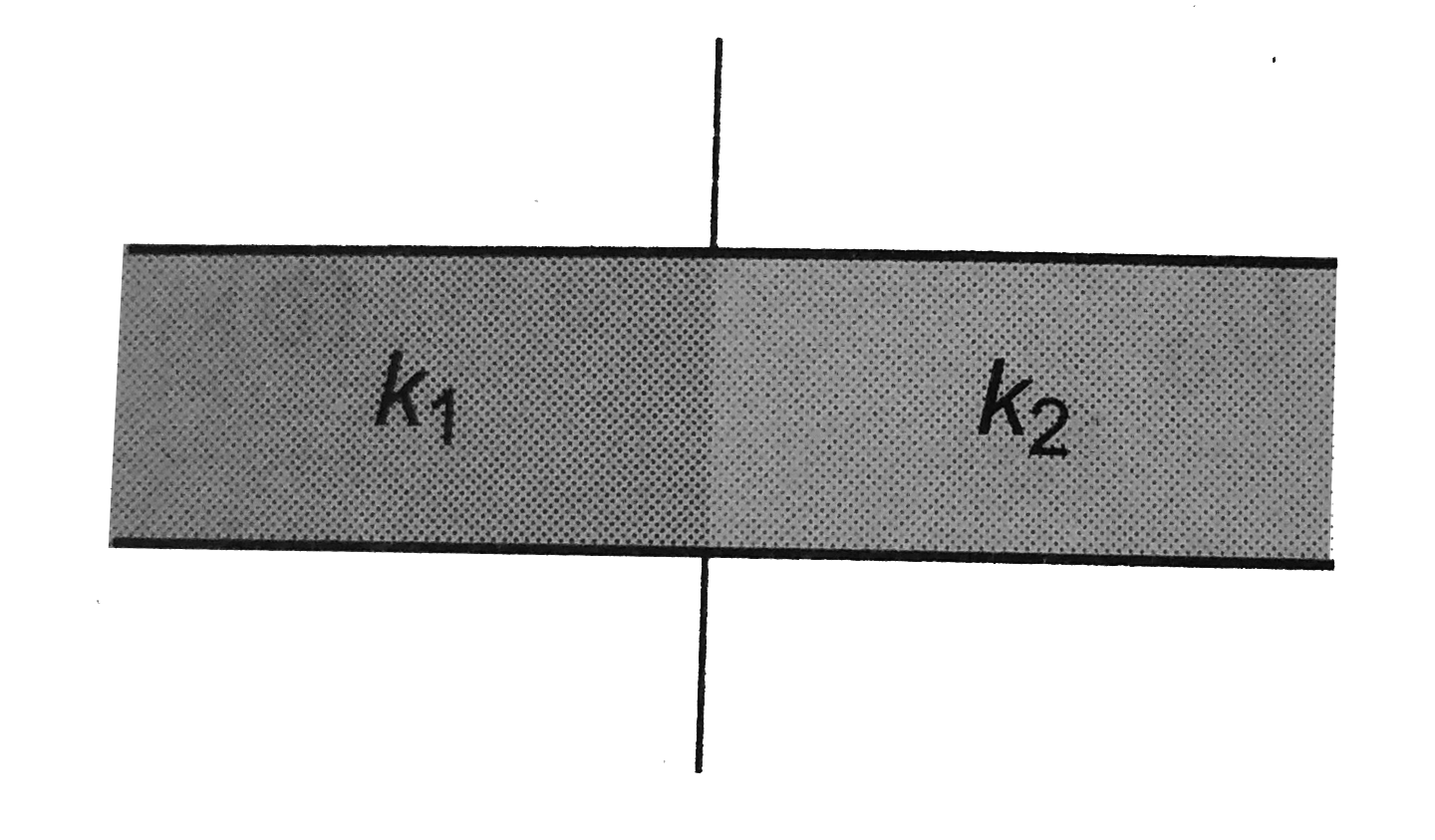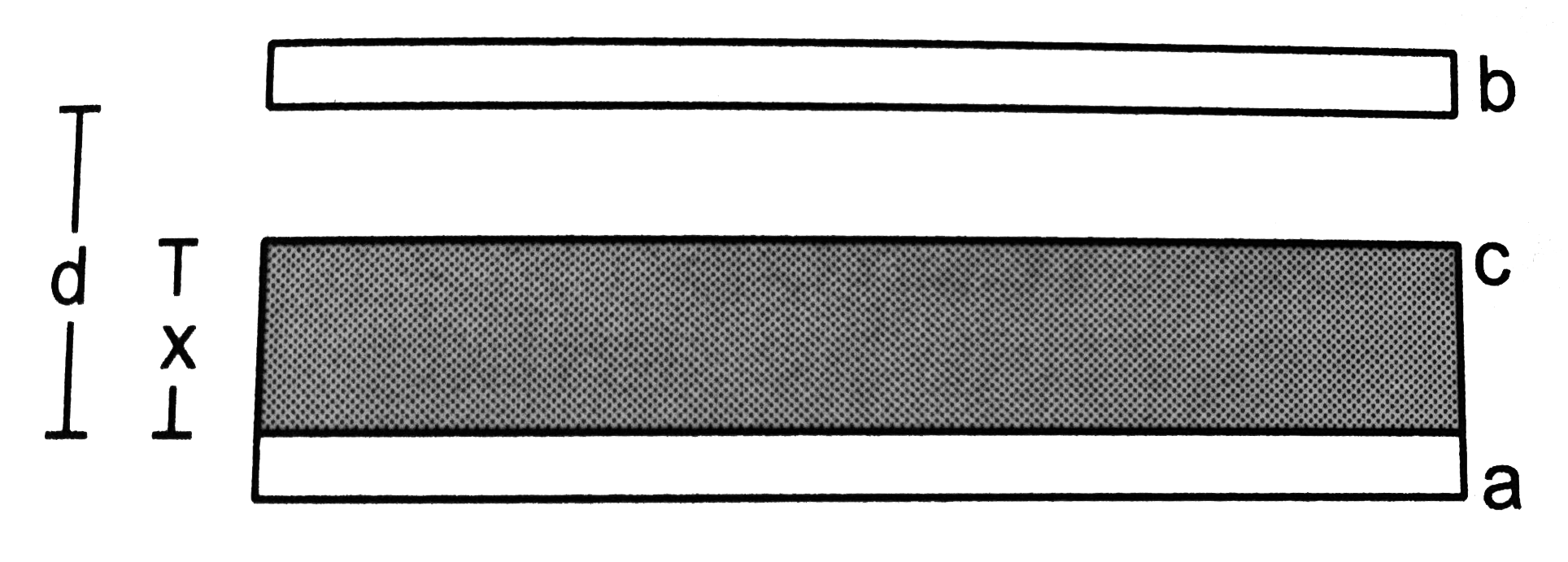A parallel plate capacitor with air between the plates has a capacitance of 9pF. The separation between its plates is 'd'. The space between the plates is now filled with two dielectrics. One of the dielectrics has dielectric constant k1=3 and thickness d3 while the other one has dielectric constant k2=6and thickness 2d3. Capacitance of the capacitor is now
45pF
40.5 pF
20.25 pF
1.8 pF
The correct Answer is:B
Step by step video & image solution for A parallel plate capacitor with air between the plates has a capacitance of 9pF. The separation between its plates is 'd'. The space between the plates is now filled with two dielectrics. One of the dielectrics has dielectric constant k_(1) = 3 " and thickness " (d)/(3) while the other one has dielectric constant k_(2) = 6 and " thickness " (2d)/(3). Capacitance of the capacitor is now by Physics experts to help you in doubts & scoring excellent marks in Class 12 exams.
Topper's Solved these Questions
- BOOK - RESONANCE ENGLISHCHAPTER - CAPACITANCEEXERCISE - High Level Problems16videos
CAPACITANCE
- BOOK - RESONANCE ENGLISHCHAPTER - CAPACITANCEEXERCISE - Exercise - 274videos
CAPACITANCE
- BOOK - RESONANCE ENGLISHCHAPTER - ATOMIC PHYSICSEXERCISE - Advanved level problems17videos
ATOMIC PHYSICS
- BOOK - RESONANCE ENGLISHCHAPTER - COMMUNICATION SYSTEMSEXERCISE - Exercise 313videos
COMMUNICATION SYSTEMS
Similar Questions
A parallel plate capacitor with air between the plates has capacitance of 9pF. The separation between its plates is 'd'. The space between the plates is now filled with two dielectrics. One of the dielectrics has dielectric constant k1=3 and thickness d3 while the other one has dielectric constant k2=6 and thickness 2d3. Capacitance of the capacitor is now
View SolutionA parallel plate capacitor with air between the plates has capacitance of 9pF. The separation between its plates is 'd'. The space between the plates is now filled with two dielectrics. One of the dielectrics has dielectric constant k1=3 and thickness d3 while the other one has dielectric constant k2=6 and thickness 2d3. Capacitance of the capacitor is now
View Solution
Knowledge Check
- Question 1 - Select One
A parallel plate capacitor with air between the plates has a capacitance of 10 pF. The capacitance, if the distance bgetween the plates is reduced by half and the space between tehm is filled with a substance of dielectric constant 4 is
A80pFB96pFC100pFD120pF
The ratio between masses of two planets is 3 : 5 and the ratio between their radii is 5 : 3. The ratio between their acceleration due to gravity will be
View SolutionA parallel plate capacitor with air between the plates has a capacitance C. If the distance between the plates is doubled and the space between the plates is filled with a dielectric of dielectric constant 6, then the capacitance will become.
View SolutionA parallel plate capacitor with air between the plates has a capacitance of 8 pF.(1pF=10−12F) What will be the capacitance if the distance between the plates is reduced by half and the space between them is filled with a substance of dielectric constant 6 ?
View SolutionAn air filled parallel capacitor has capacity of 2pF. The separation of the plates is doubled and the interspaces between the plates is filled with wax. If the capacity is increased to 6pF, the dielectric constant of was is
View SolutionA parallel plate capacitor with air as medium between the plates has a capacitance of 10μF. The area of capacitor is divided into two equal halves and filled with two media as shown in the figure having dielectric constnt k1=2 and k2=4. the capacitance of the system will now be
 View Solution
View SolutionA parallel plate capacitor of capacitance C is charged to a potential V and then disconnected with the battery. If separation between the plates is decreased by 50% and the space between the plates is filled with a dielectric slab of dielectric constant K=10. then
View SolutionA parallel plate capacitor has plate area A and plate separation d. The space betwwen the plates is filled up to a thickness x (ltd) with a dielectric constant K. Calculate the capacitance of the system.
 View Solution
View Solution

